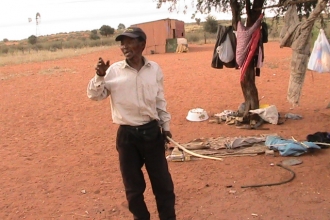Economic valuation of environmental damage
Read Francisco Alpizar opinion article (Valoración económica de daños ambientales) in "La Nación" (October 9th), related to economic valuation of environmental damage (Spanish only).
Read Francisco Alpizar opinion article (Valoración económica de daños ambientales) in "La Nación" (October 9th), related to economic valuation of environmental damage (Spanish only).
Marine turtles are a flagship species for conservation because of their ecological role in marine ecosystems as well as the existence value that humans attach to them. Despite the legal ban on turtle egg harvesting, poaching and consumption are very common in Nicaragua.
Programs of payments for ecosystem services are policy instruments that compensate those who provide those services for the costs they incur. One of the most attractive characteristics of this type of programs is that they can increase the generation of ecosystem services while simultaneously reducing the negative economic and social costs that local people might face from land use restrictions.

Research Proposal: Individual Incentives to Cooperate within Community-Based Resource Management Institutions: Sea Turtles in Costa Rica and Nicaragua EfD researchers: Róger Madrigal PI: Róger…
A bio-socio-economic model was developed to analyze the economic and environmental interactions between the aquaculture activity and artisanal fisheries related to the seed settlement of Mytilus Chilensis that is realized in the Reloncaví Fjord. Meaning by economic interactions the effects of the action of both productivities activities has on the employment and production variables of this sectors. And for environmental interactions the effect that has the aquaculture activity on the seed settlement activity, in terms of the uneaten food pellets (nutrients).
In this paper we used a net present value model to jointly estimate the willingness to pay (WTP), and the intertemporal discount rate, for a biodiversity environmental conservation program whose payments are allocated along a time horizon. We applied a contingent valuation survey to capture the economic value associated with the protection of a marine ecosystem in the marine reserve, Choros-Damas in Chile. Respondents faced a scenario with a WTP question with periods of 1, 5, and 10 years.

Far from being barren wastelands, drier parts of the country like the Kgalagadi are actually treasures for poor rural communities, who are heavily depend on the natural environment as an alternative…
In an effort to gauge the appropriate entrance and conservation fees for three southern African nature reserves, researchers associated with the University of Cape Town’s Environmental Policy Research…
Communities living near remote ecotourism centres can reap the benefits of a range of opportunities which the industry offers them in otherwise job-scarce and remote places. But tourists and industry…
With rising operating costs and no increases in state subsidies, SANParks needs to find alternative ways to fund its national conservation parks in South Africa. But conservation and entrance fees…